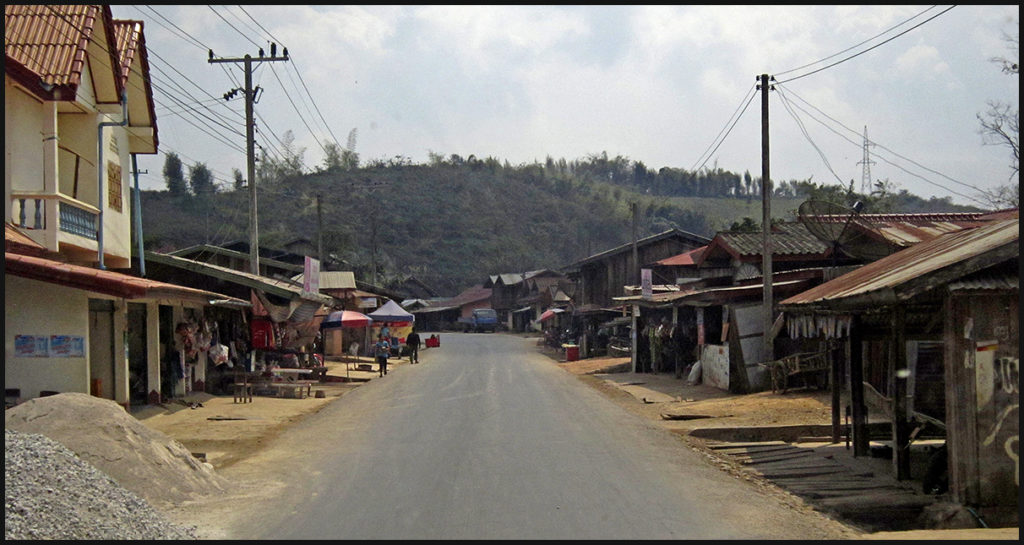
Laotian country road.
Poor Laos. It’s gotten left behind by it’s surging neighbors, Thailand and Vietnam. There are some signs of infrastructure improvements like roads and bridges, but the majority of the rural population lives with no running water and sketchy sewage treatment. Most of the country has electricity, but only one or two bulbs per household. Along the highways are some large, fancy new houses, but the global downturn affected Laos and the economy is just now picking up again. While the large towns are thriving, the small villages, not so much.
Leaving the north, which has already been heavily logged except the protected areas, we found the timber business thriving with a sawmill in every small burg. They build eroding logging roads and use trucks instead of the elephant power of yore. Environmental standards are low. Mounds of trash rival the poor Central American countries. Wild animal and bird life is non-existant in inhabited areas. Those that make the mistake of coming close are caught, and either sold in cages or eaten.
Population is less dense than in other SE Asian countries, but with the number of children in evidence, that won’t last long. Not many fat ones, but the government seems to be keeping the face of famine at bay. There are no panhandlers.
There are also no old cars. Old buses and heavy trucks…but all new cars and pickups. A honk of the horn is all it takes to make room for everyone on the country’s two lane highways.
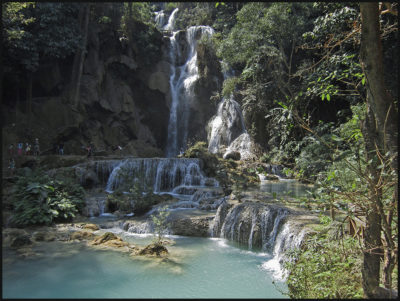
Waterfall park near Luang Prabang
Before leaving Luang Prabang we tuk-tuked to their favorite picnic spot. A series of falls and mineralized blue pools and a good hiking trail make this a worthwhile side trip. Leave early before the crowds arrive.
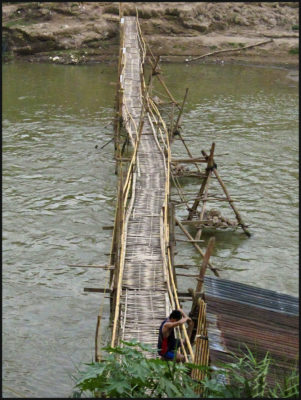
Bamboo bridges are easy to rebuild after the seasonal floods.
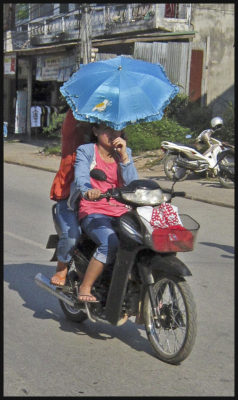
Motorbikes have freed the population. Not many have cars, but most have a motorbike.
We skipped the old French capital of Laos, Vientaine, and the very touristy town of Vang Vieng for the somewhat dismal interior city, Phonsavon, to see the Plain of Jars. Stone Age people chipped these huge funeral jars from nearby quarries and somehow transported them to hilltops all over the area. The largest weighs over a ton. There is still some debate about the exact function, but archeologists think they were for some sort of burial ritual. We rented some junker motorbikes: the freedom of our own wheels was liberating.
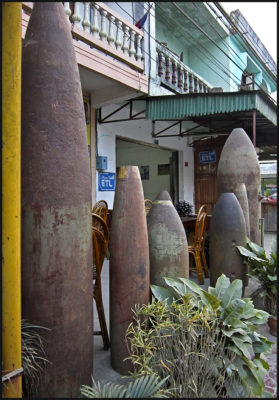
The decor at the Crater Cafe.
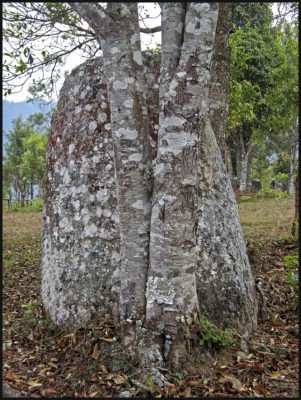
One of the “jars”.

The Plain of Jars
This area is infamous for the amount of unexploded ordinance from the Vietnam war era. Crater holes are now filled with water and serve as livestock tanks. Over the space of 10 years the US dropped 2 million tons of bombs (flying 580,344 missions) on Laos. Thirty percent failed to detonate leaving the country littered with UEO, (un-exploded ordnance). There is some effort to find and defuse these time bombs, but the work goes slowly, if at all.
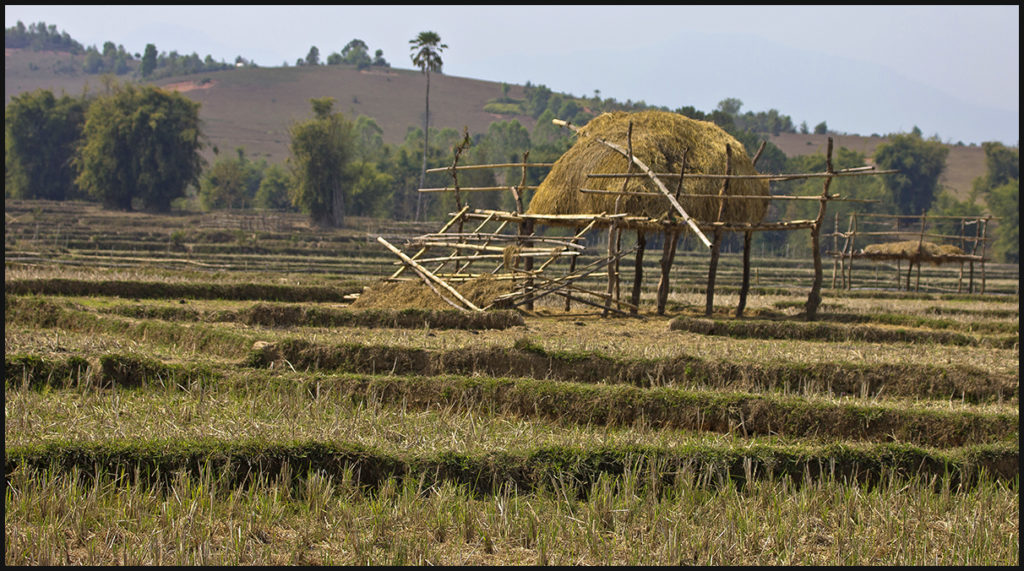
Stay on the trail out to visit the jars.
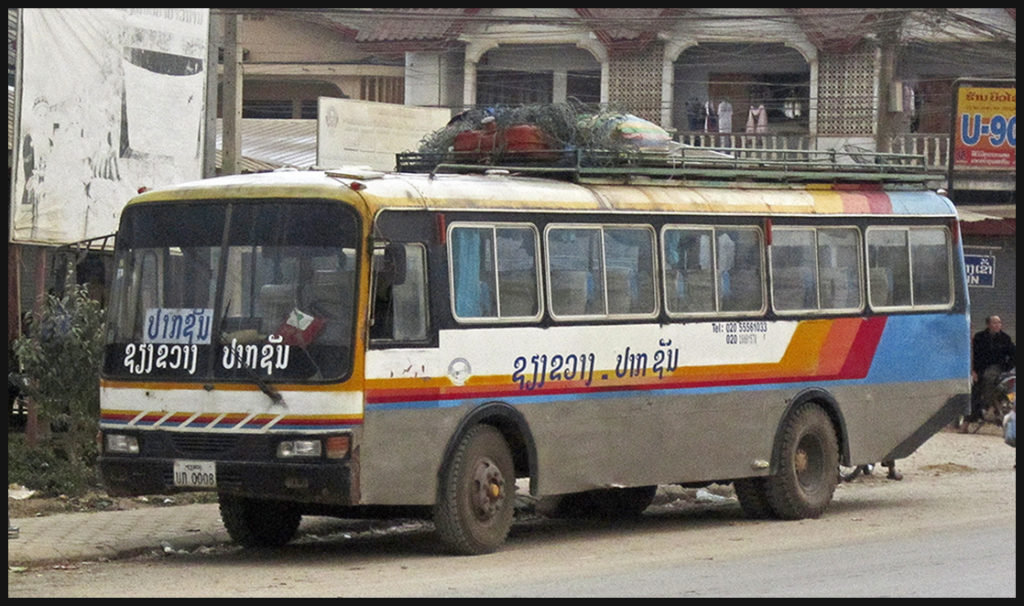
Leaving Phonsavon.
Bused to Paksan. As we slogged to what we thought looked like a good guesthouse, a uniformed gentleman on a motorbike asked where we were going. We pointed and he shook his head and insisted I get on his motorbike with 3 bags of stuff. How could I refuse? He took off, leaving Craig at the side of the road, and delivered me to a nice guesthouse with comfortable room at $7.50/night. Then he went back and picked up Craig. Whew! All this with very little English. Our luck continues to hold, and people have been very helpful. Then inland to the Annanite Range on the border with Vietnam. Limestone karst cliffs line the valley to the Kong Lor cave.
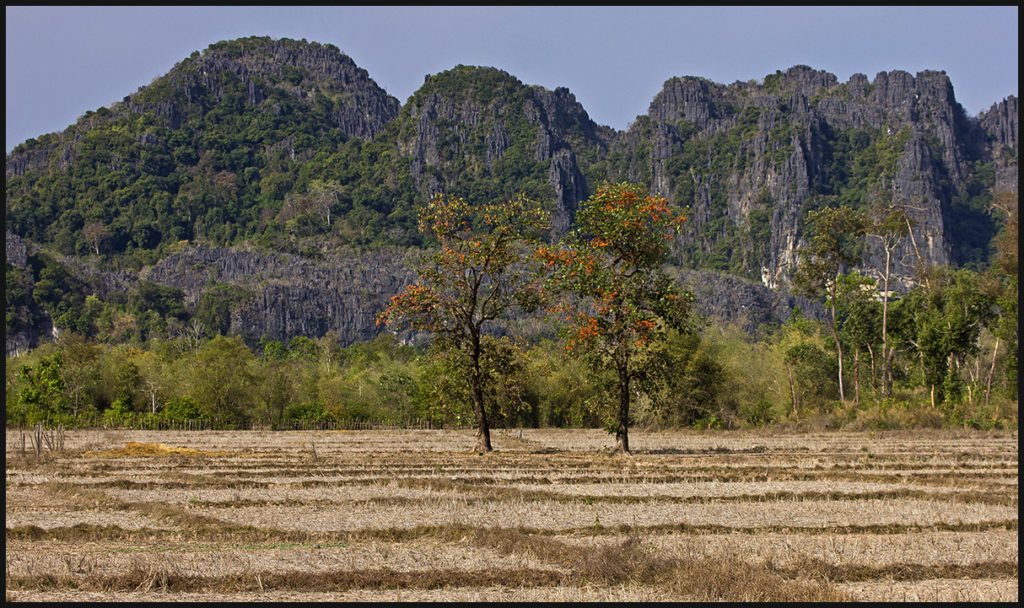
Karst valley on the way to the cave.
It’s formed by an underground river under the range. The tunnel runs for 7.5 kilometers: boatmen take people through in longtail boats. Except for the light in the walk-through cathedral portion, there is no light. The little boats zoom along in total darkness except for the light from the boatmen’s headlamps picking out the looming rocks in the river. A beautiful river valley opens at the other end. What a ride.
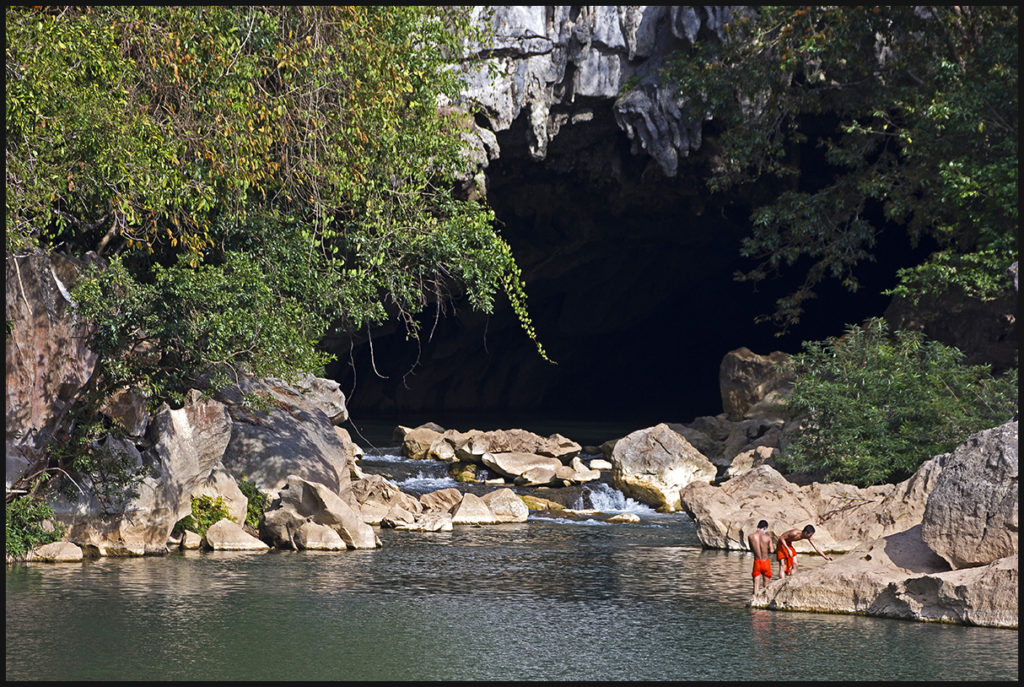
Entrance to the Kong Lor cave.
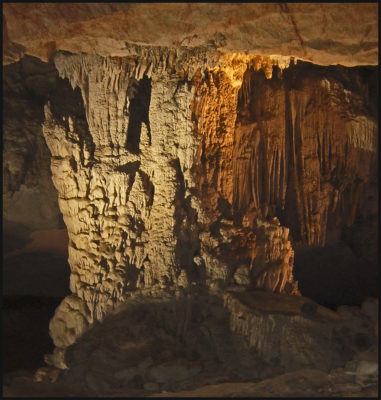
Inside the cave.
At the little town nearby we rented the information lady’s motorbike for a trip to the cave. She invited us to stay for dinner, eaten Lao style…but we needed to buy the fish. No problem, off we went on the motorbike to the market where she picked a live fish out of a barrel. In a land with little refrigeration, keeping food alive until ready to eat is the best strategy. She cooked it on her little ceramic stove in a funky cook shack while we watched her 14 month old daughter. She also made sticky rice you ball up in your hand and dip in a spicy sauce to eat with the fish, and a bamboo soup she had gathered the bamboo shoots for in the woods. Certainly a good glimpse of everyday life.
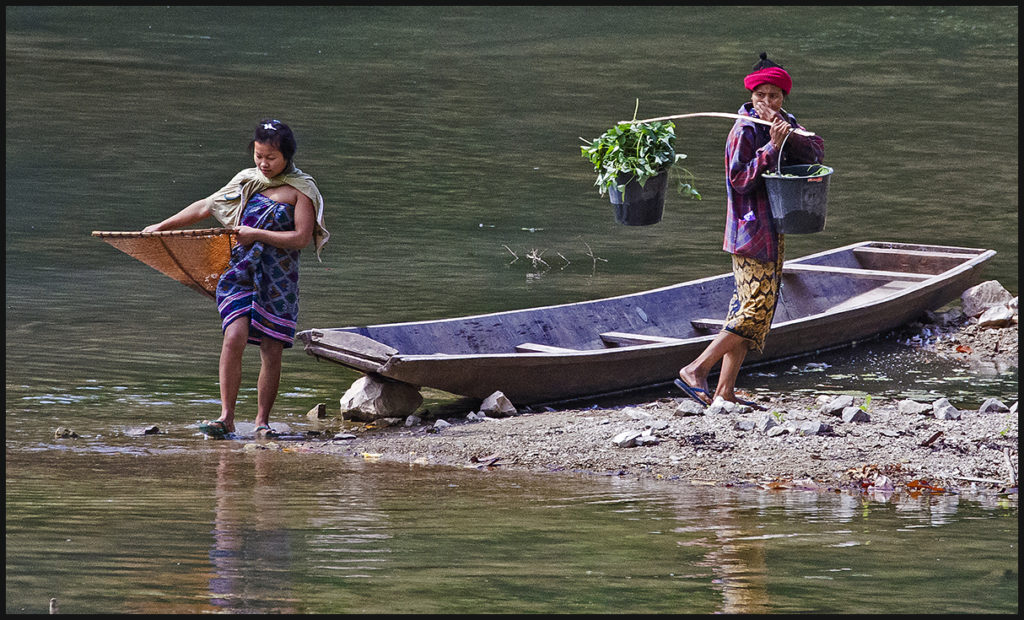
Women gathering greens in the river.
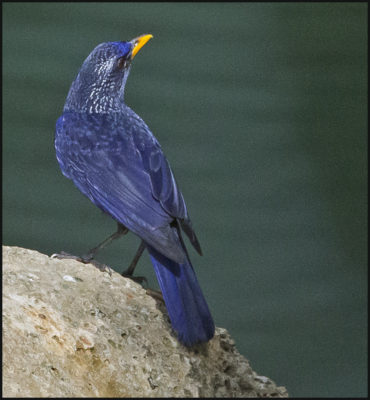
A blue whistling thrush at the cave entrance.
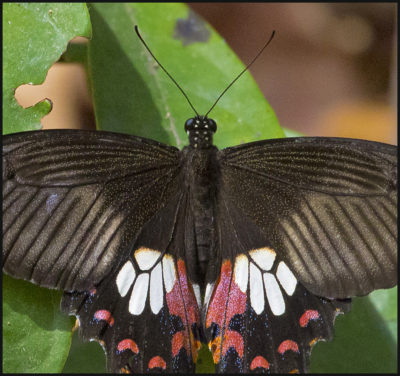
Butterflies and dragonflies are spectacular.
Further south is the Kingfisher eco-lodge. The vehicles of choice for shorter hops seem to be these “songtaus”, open-air bench seats and a roof. It took most of the day to go 46 miles but watching the Laotian world go by is fascinating.
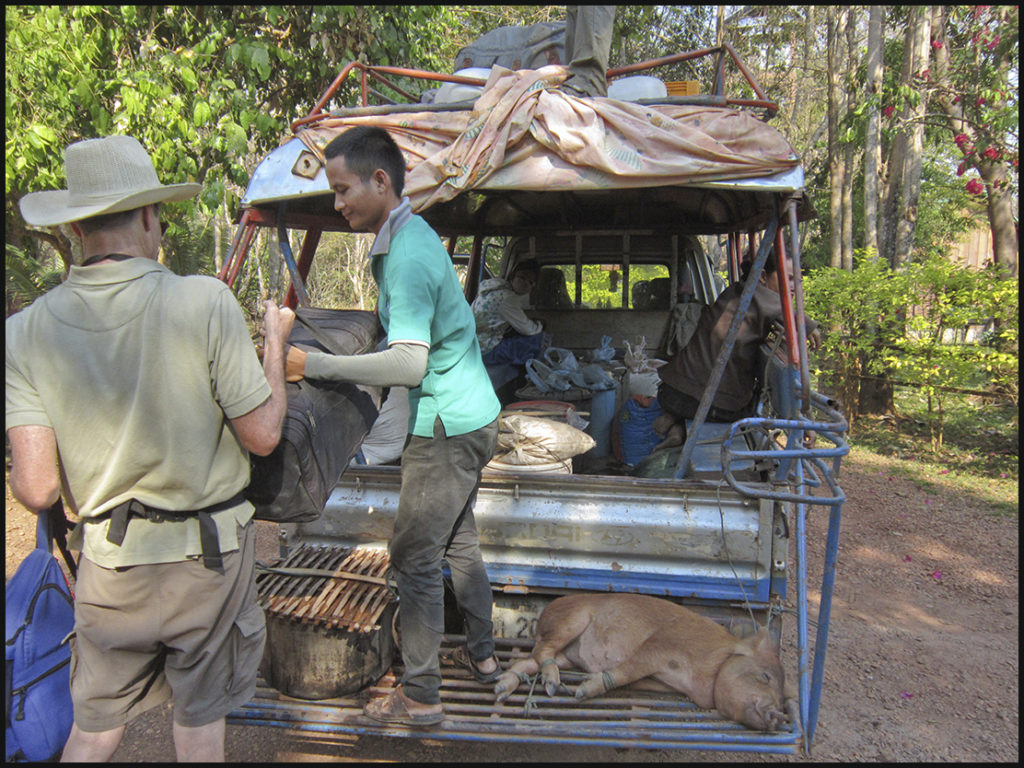
The local transport: us the pig bound for market, a few betel chewing ladies and some buckets of fish offal.

Lotus pod.
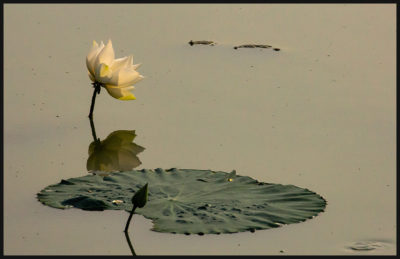
The ecolodge was so laid back and charming.
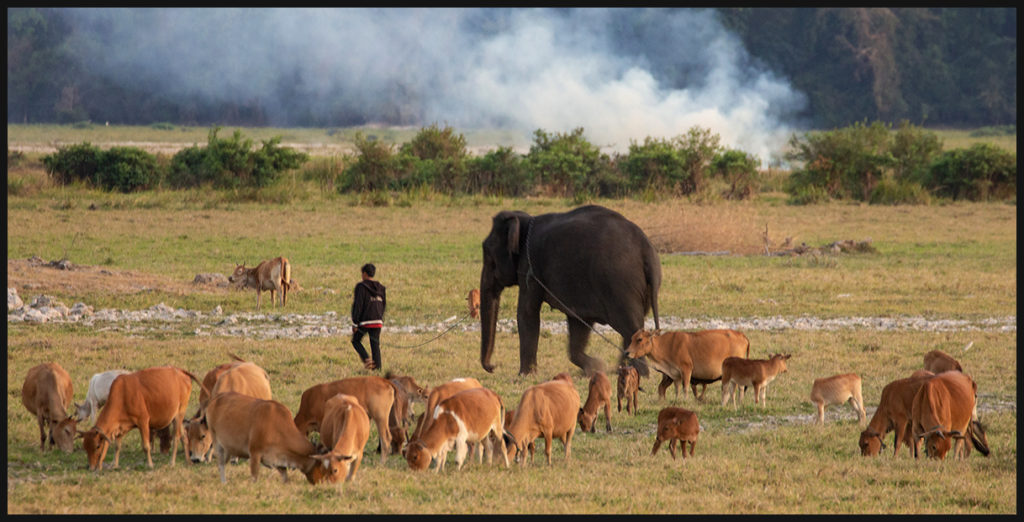
View from the cabin.
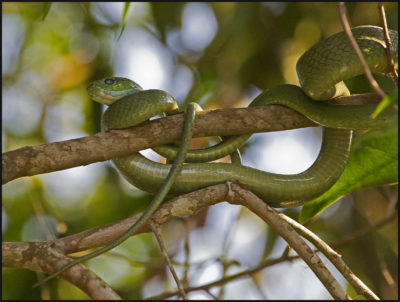
Green tree snake.
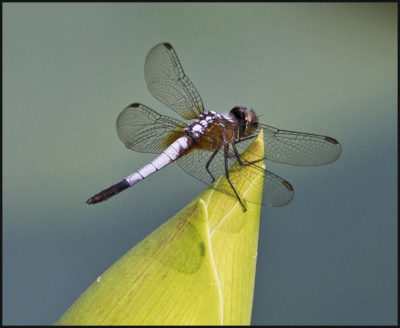
One of many dragonflies.
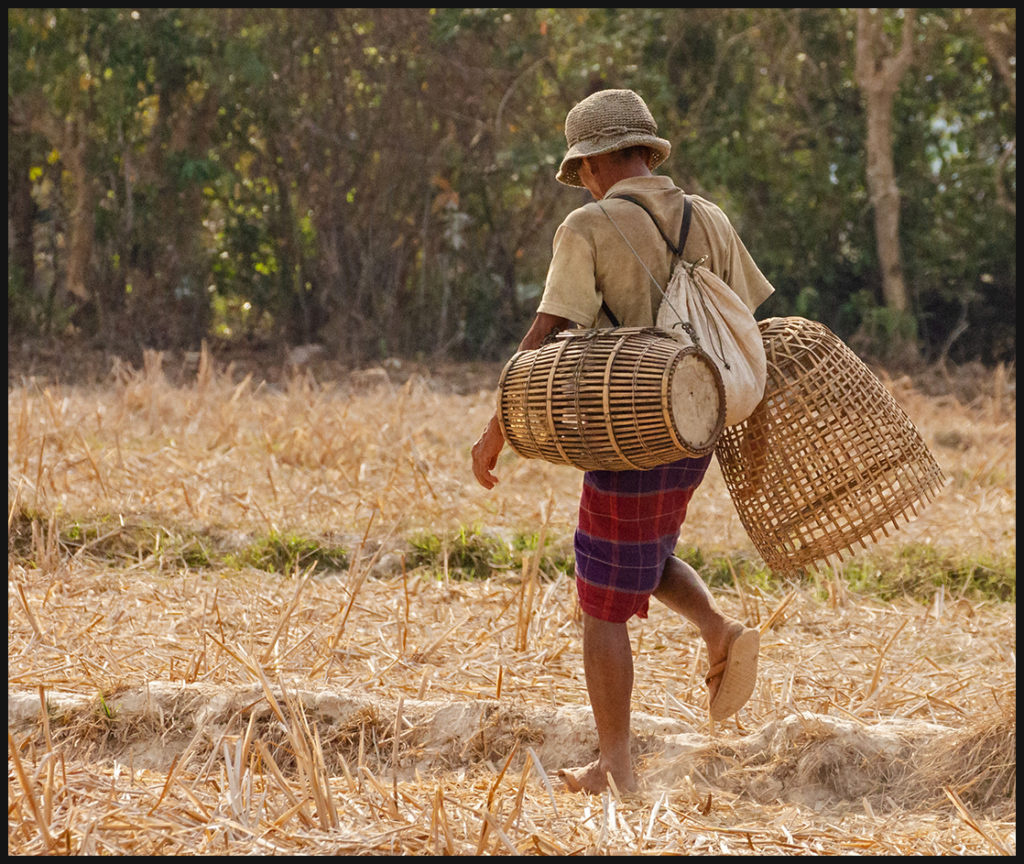
Hi ho, hi ho, it’s off to work we go.
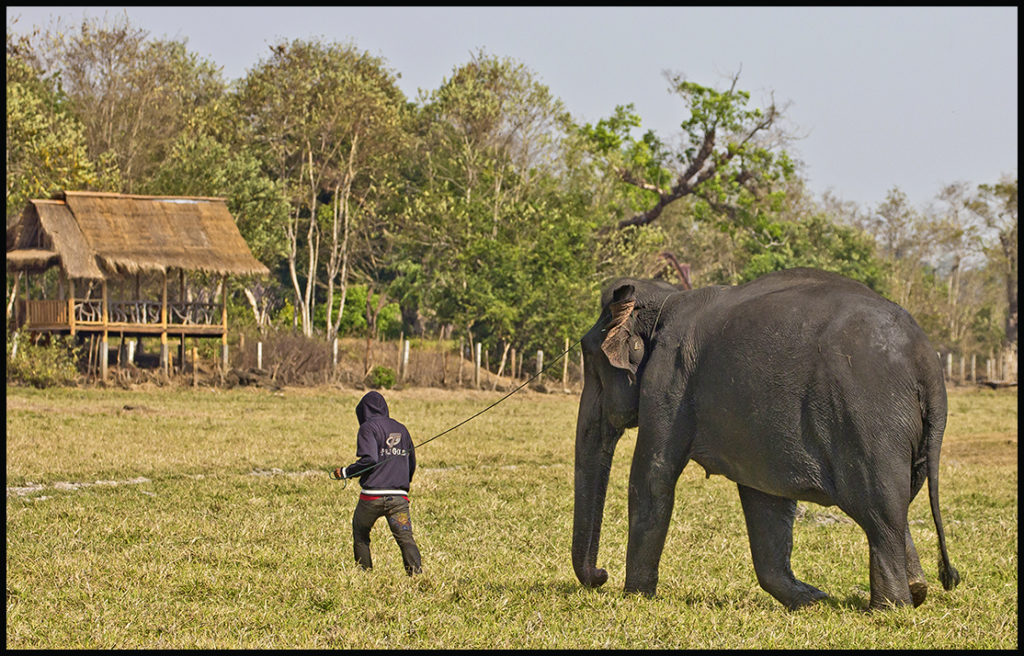
Another man off to work. They wear sweatshirts even thought the temperature is about 80F. Our cabin in the background.
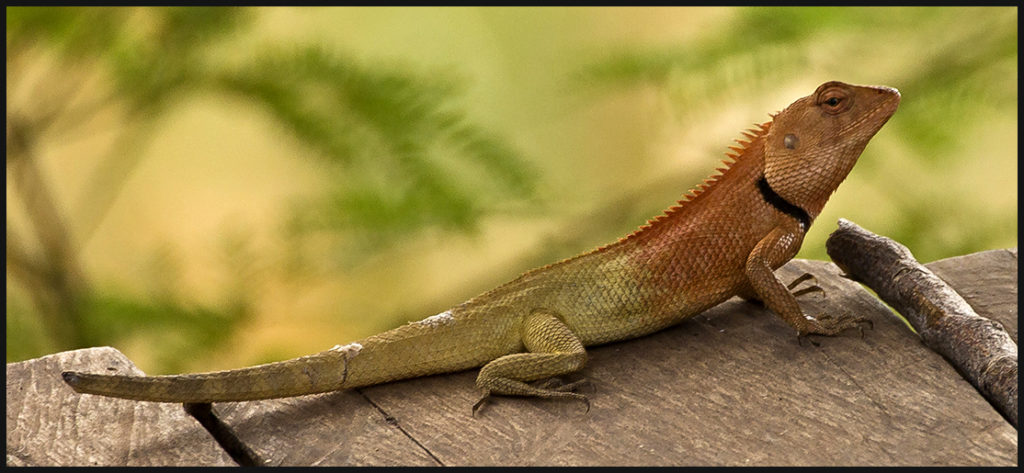
Lizard at a restaurant picks up food scraps.
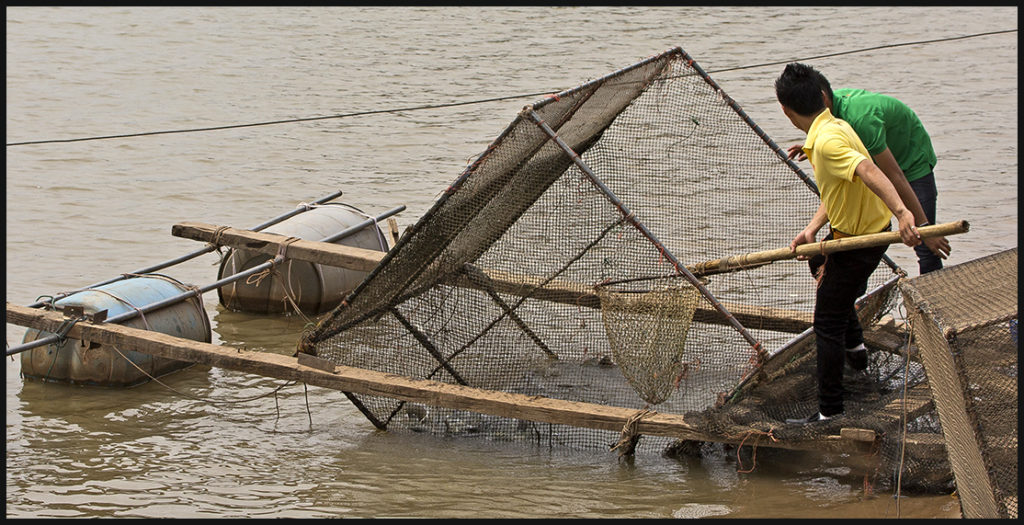
This is how they keep the fish fresh without a refrigerator. The Mekong has multitudes of uses.
And another songtau takes us south again. Inside they are very colorful. They haul everything from small shopping items to building materials. Fortunately this time we didn’t have to keep our feet on top of a load of cement bricks.
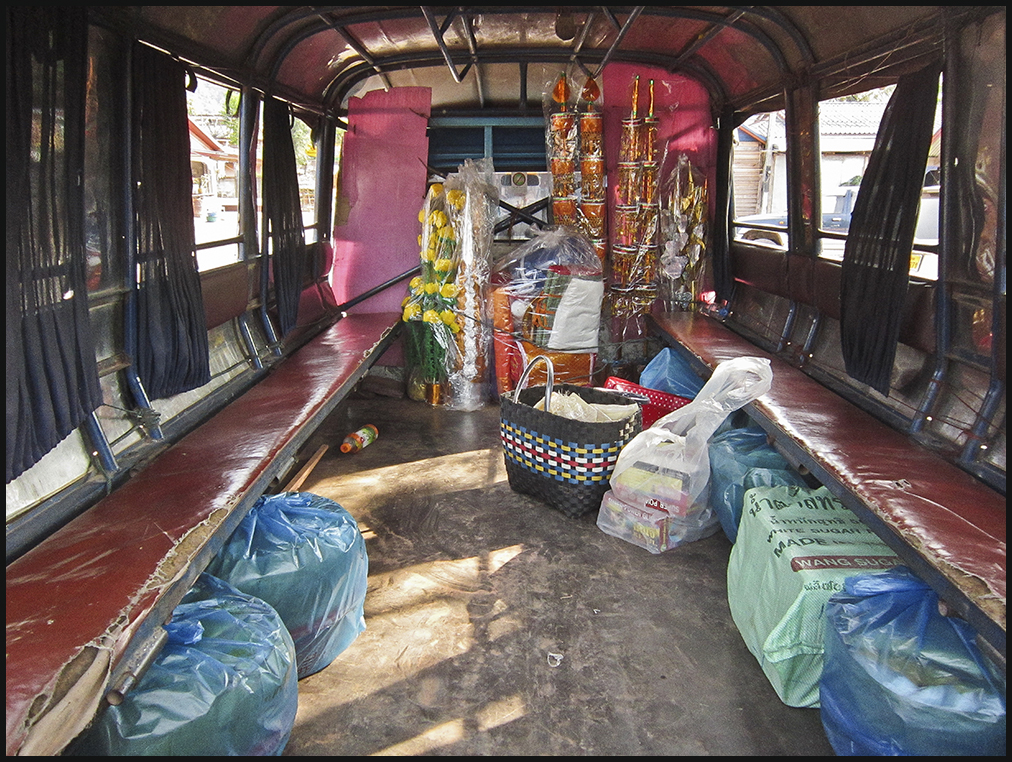
Now to the thousand islands area of Laos along the Mekong just above the Cambodian border.
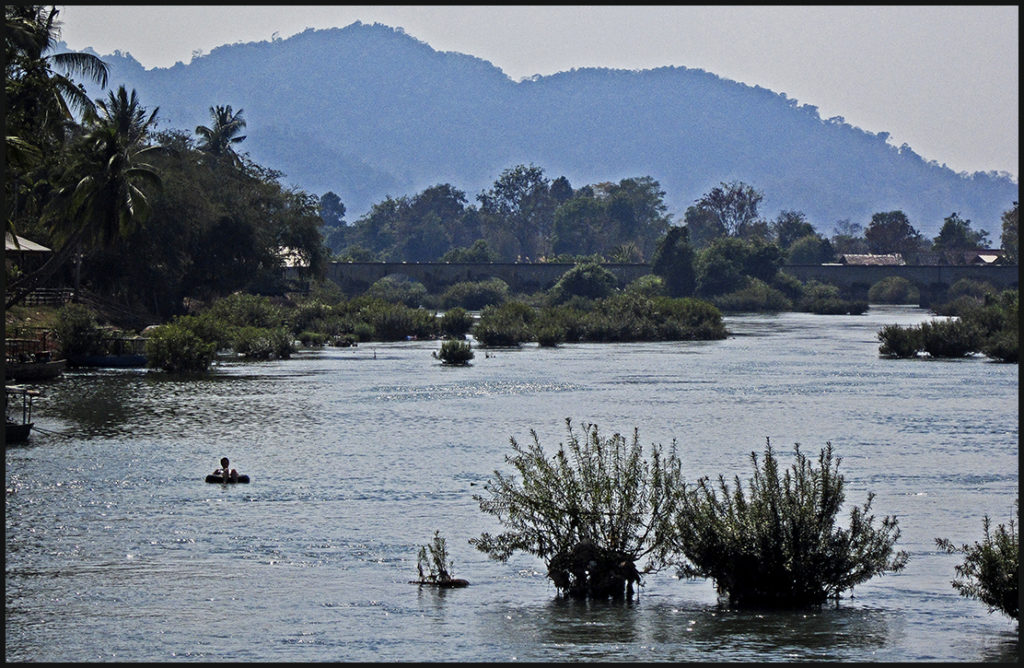
Nearing Don Khone, our island of choice as it was noted as a more quiet island.
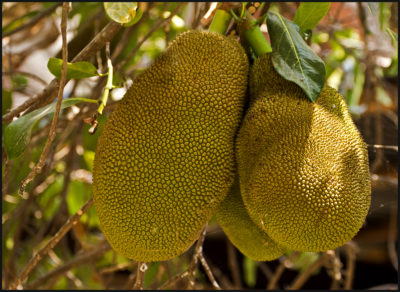
Giant jack fruit grow on trees.
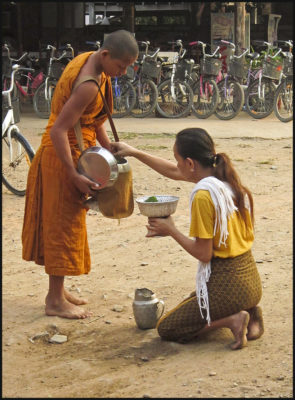
Townspeople feed the monks in the mornings as they make their rounds.
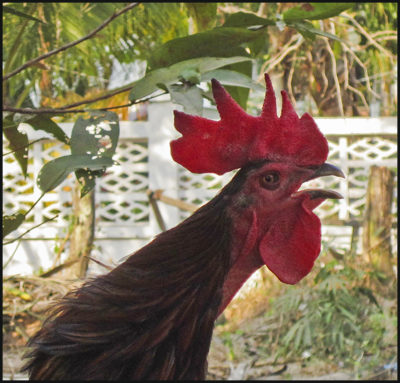
The southeast Asia alarm clocks.
The island was as advertised, very quiet and laid back. Rental bicycles are available for tourists to tour the island.
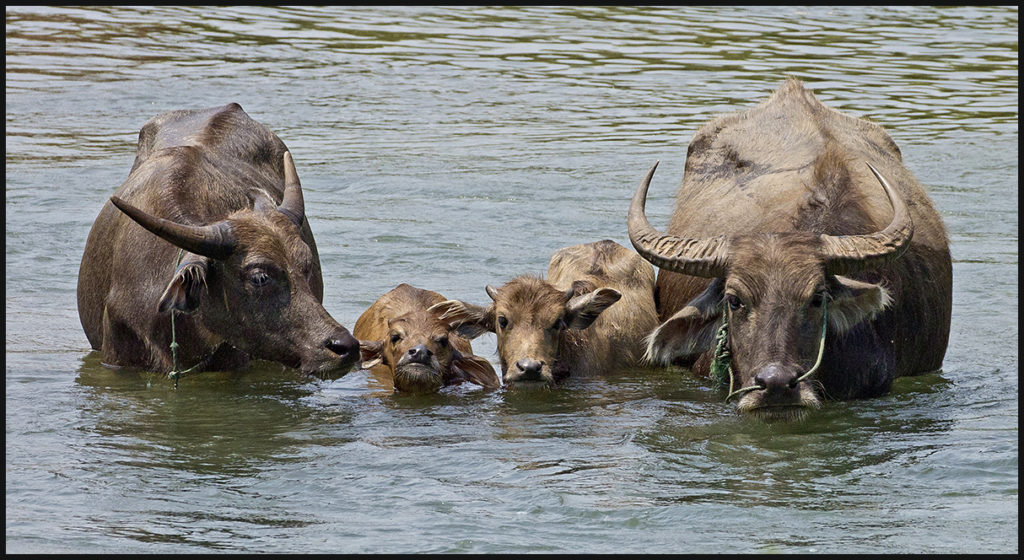
Workers enjoying a bath.

People also use the river to bathe in.
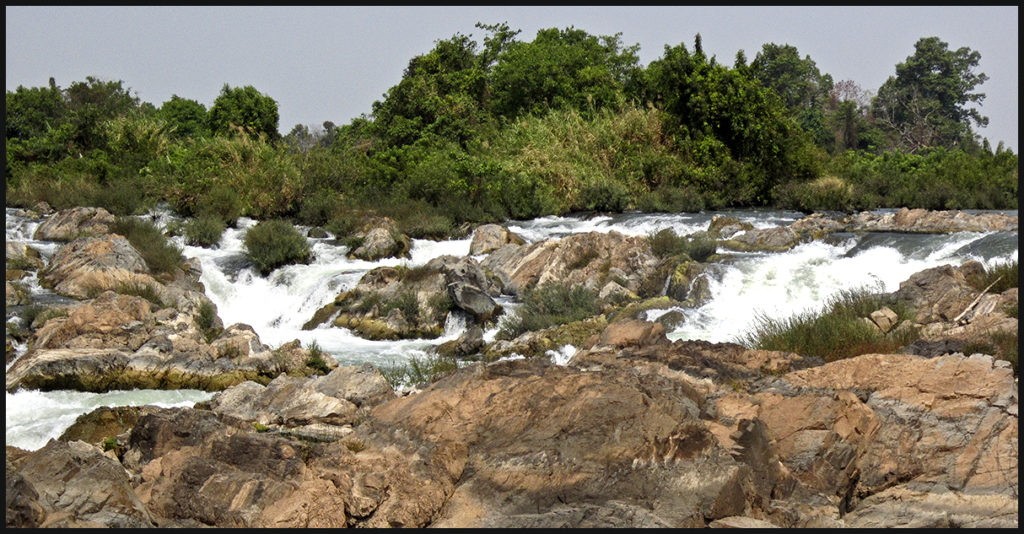
This part of the Mekong is unnavigable for obvious reasons.
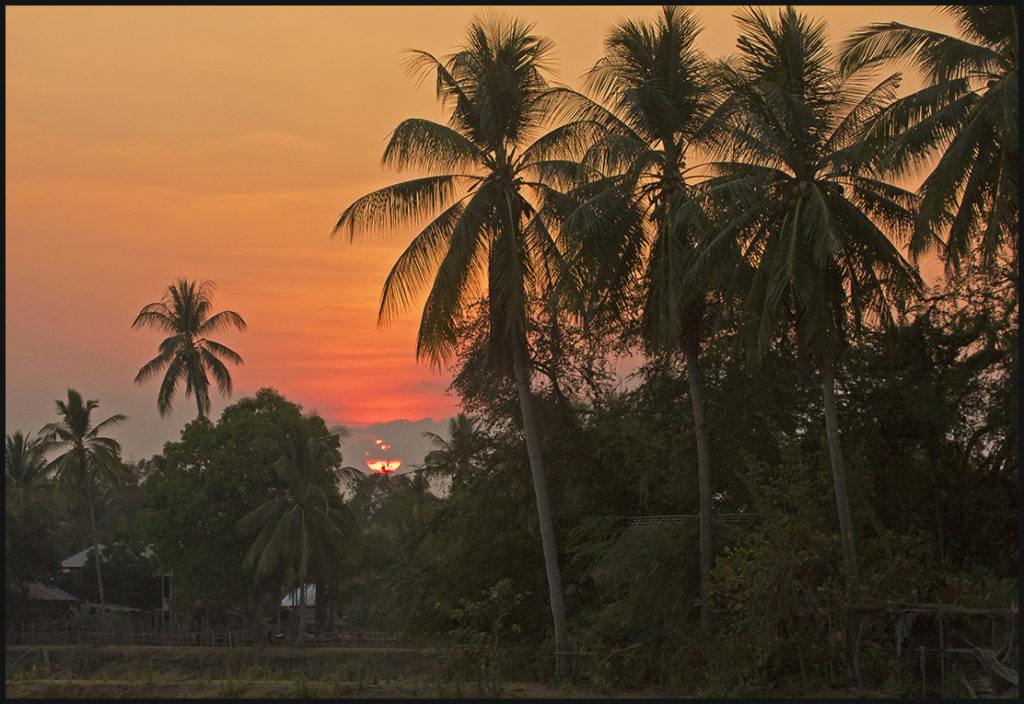
We bid adieu to Laos. Next stop Cambodia. Short video follows with more information about this part of Laos.
